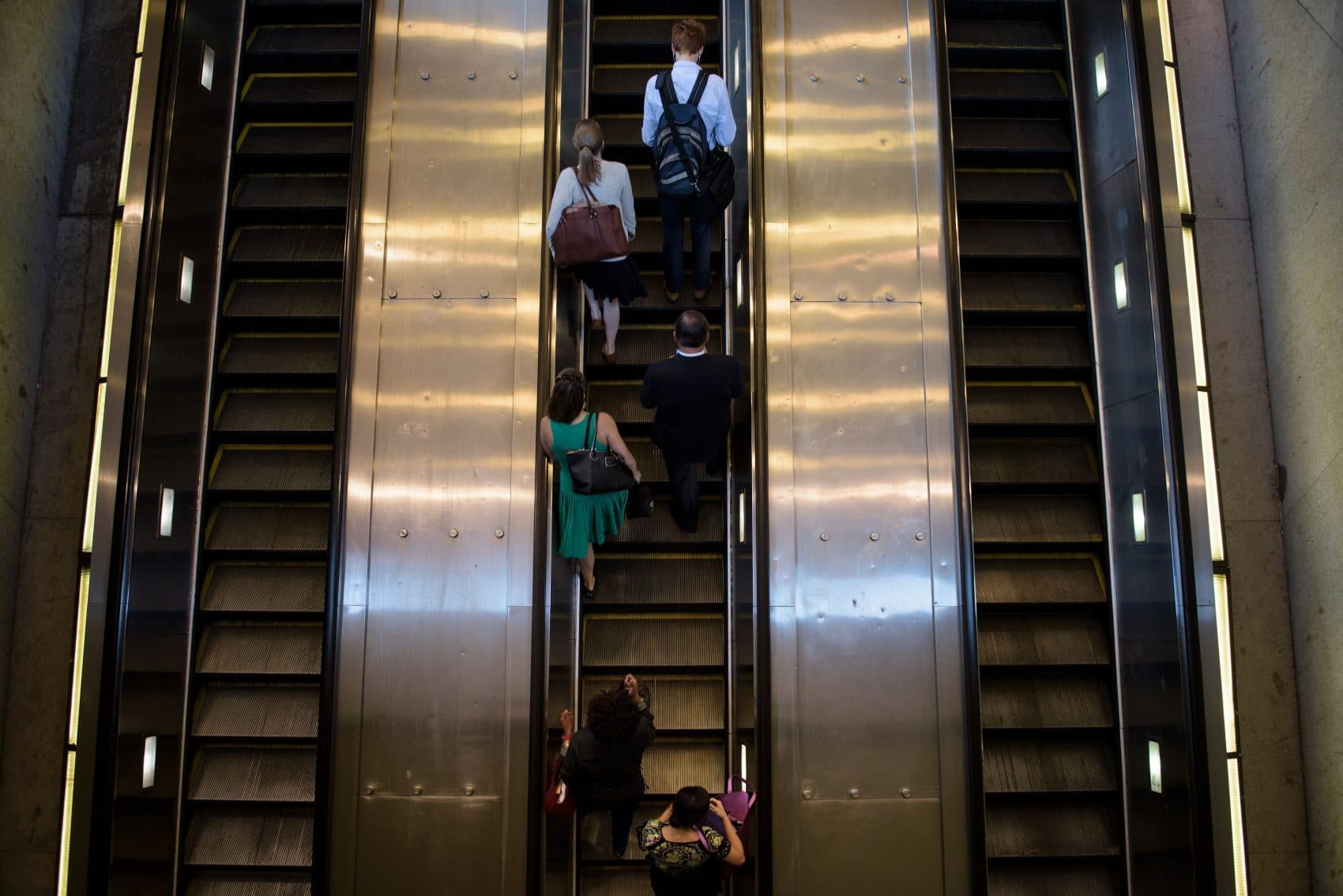Advertisement
What's The Most Efficient Way To Ride An Escalator?
Resume
Are we using escalators most efficiently by standing on the right and walking on the left? A study from 2016 found it's faster for all passengers to stand on both sides.
Here & Now's Jeremy Hobson talks about the theory with Lee Gray, a professor of architectural history at the University of North Carolina Charlotte.
Interview Highlights
On a study that found standing on both sides of an escalator is the most efficient way to ride
"Well the study was very interesting, because it was conducted in the London Underground, their subway system, and the aim was to reduce congestion as people exited trains. And while they proved that — I think reasonably conclusively — that, when people did that, the congestion was less, but there's still the factor that it forced people who are accustomed to walking more quickly — perhaps on the left — to standing still. And there was some controversy about that.
"It's one of these sort of 'greater good,' perhaps, versus the individual."
On how escalators were developed
"Escalators were originally developed for how many of us use them now: They were developed for mass transit systems, originally in New York, to get passengers up to the elevated train station. And then they very quickly were adopted in subway systems that were developed in the early part of the 20th century. And a secondary use, but also proved to be very popular, was in department stores, which were emerging 1890s, early 20th century. And there they both helped move customers more easily from floor to floor, but they also had a secondary use in department stores in that you now had standing passengers who would look around, and they would often position merchandise strategically so that shoppers could observe it."
On whether escalator technology has changed over time
"Very, very few changes that the average person would see. The makeup of the stairs you stand on has changed. There are now new types of plastic that are being used in some settings, the machinery is sort of fine-tuned, they're much, much safer, for instance, than they were 100 years ago. But for all intents and purposes, the basic technology has not changed for over 100 years."
On how dangerous escalators are
"Well by and large, escalators are very, very safe. They are, if we think vertical transportation, they are more dangerous than an elevator only in that there are more moving parts, and it's this sort of massive machine that, while it is made as precisely as it possibly can be to eliminate accidents, yes, you can if you were careless, were not careful, get a finger caught or something like that. So, that's why — and it goes back to the walking issue — the best recommendation is stand, hold the railing, ride the escalator, get on and off very carefully. And 99.9 percent of the time you'd be fine."
On the speed of an escalator
"The average speed of an escalator is about one to two feet per second, 90 to 120 feet per minute, which in theory is average walking speed. So the average person, if they step on at their normal walking pace, should not have any trouble exiting or entering. And what I think is interesting about it is, this has always been a part of the American psyche — we like to go fast. The pace of business is fast. And while the escalator's convenient, anything to get me there faster is a good thing."
On the wooden escalator at Macy's in New York
"Originally all escalators had wooden steps, and as far as I know there's only one left in the United States, and it's in Macy's in New York City. And it's the very top escalator in the building, and it still has its original balustrades on either side. And for escalator nerds like me, one of the joys of this escalator is the sound it makes as it operates, because of the wooden steps, it has this sort of wonderful, mechanical sound to it that is unique and really quite wonderful."
This segment aired on April 18, 2017.